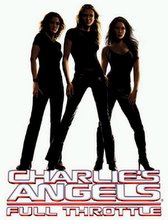Rise of the action film
The phenomenal success of the James Bond series in the 1960s and 1970s, helped to popularise the concept of the action film in recent years. The early Bond films were characterised by quick cutting, car chases, fist fights and ever more elaborate action sequences. The series also established the concept of the resourceful hero, who is able to dispatch the villains with a ready one-liner.
Despite the success of the Bond films, the action film did not become a dominant form in Hollywood until the 1980s and 1990s, when it was popularized by actors such as Arnold Schwarzenegger, Bruce Willis and Sylvester Stallone. The 1988 film Die Hard was particularly influential on the development of the genre in the following decade. In the movie, Bruce Willis plays a New York police detective who inadvertently becomes embroiled in a terrorist take-over of a Los Angeles office block. The film set a pattern for a host of imitators, like Under Siege (1992) or Air Force One (1997), which used the same formula in a different setting.
Action films tend to be expensive requiring big budget special effects and stunt work. Action films have mainly become a mostly-American genre, although there have been a significant number of action films from Hong Kong which are primarily modern variations of the martial arts film. Because of these roots, Hong Kong action films typically center on acrobatics by the protagonist while American action films typically feature big explosions and modern technology.
Current trends
Current trends in action film include a development toward more elaborate fight scenes, perhaps because of the success of Asian martial arts elements, such as kung fu and karate, in Western film. Actors in action movies are now much more skilled in the art and aesthetic of fighting than they have been in the past, apart from a few acknowledged fighters like Steven Seagal. Now, a distinction can be made between films that lean toward physical, agile fighting, such as The Transporter, and those that lean toward other common action film conventions, like explosions and plenty of gunfire, such as Lethal Weapon, although most action movies employ elements of both.
Several of the common action film conventions saw their birth in the release of James Bond series (containing many of the original elements of spy movies still seen today). One popular element is the car chase, a feature that is almost standard in action films. Bullitt and The French Connection were among the earliest films to present a car chase as an action set-piece.
Another genre staple employed by many action films is a suspenseful climax centered around a Mexican standoff between two leading characters.
Feminist theory
Feminist film theory has been used to analyze action movies, owing to their rare variance from a core archetype. The separation between the physical male who controls the scene and the look and the female, who is almost always the object of the look is very clear in most such films. Although female characters in most action films are nothing more than objects, a prize for the winner, hostages, loving wives and the like, there has been a move towards stronger female characters such as those in works by James Cameron and Kathryn Bigelow. However, in most action movies since the 1970s, the female character in an action movie is usually portrayed as incompetent and lacking in good judgment. These characters tend to unintentionally make life harder for the hero.
Female leads
The science-fiction action/horror movie Alien was the first action movie to feature a strong female protagonist, independent of a guiding male lead Alien has thus been considered a prototype for the Girl Power-effect that occurred in Hollywood towards the early 2000s when more and more action-movies with powerful female leads appeared from the comedic (e.g. Charlie's Angels) to the mainstream martial arts film (e.g. Kill Bill).
Friday, October 20, 2006
Subscribe to:
Post Comments (Atom)

No comments:
Post a Comment